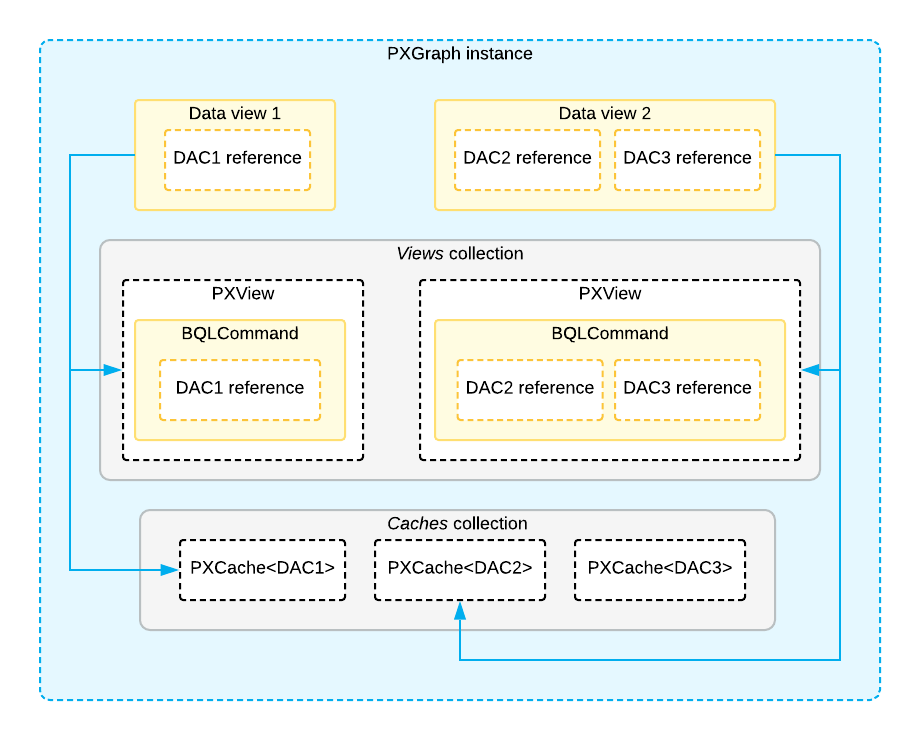PXView and PXCache of the Data View
Data views are graph members that are used to retrieve and modify data records of a particular data access class (DAC). You use data views:
- To provide data retrieval and manipulation functions for the UI
- To retrieve and manipulate data from code
You define a data view with a class derived from the
PXSelectBase class, such as SelectFrom<>.View in
fluent BQL and PXSelect<> in traditional BQL. The first DAC of the
data view is the main DAC of the data view. Below are the Orders and
OrderDetails data views that are defined in the
SalesOrderEntry graph. Both data views provide data for the UI. MYOB Acumatica Framework
automatically instantiates the data views and invokes the Select() method
when either of these data views is requested by the
client.
public class SalesOrderEntry : PXGraph<SalesOrderEntry, SalesOrder>
{
// Provides an interface for manipulation of sales orders
public SelectFrom<SalesOrder>.View Orders;
// Provides an interface for manipulation of detail lines of
// the specified order
public SelectFrom<OrderLine>.
Where<OrderLine.orderNbr.
IsEqual<SalesOrder.orderNbr.FromCurrent>>.View OrderDetails;
}When a graph executes a data view, the graph creates the following objects:
- The PXView object, which contains the BQL command that corresponds to the data view
- The PXCache<DAC> objects whose type parameter is defined by the data access classes (DACs) that are used in the BQL command

PXCache<DAC> are objects that are created by the system to maintain data records that have not yet been saved to the database and the modifications to these data records. The system serializes the modified data records from all cache objects to the session between round trips and restores them on each new round trip.
Each data view is connected to a cache object
by the main DAC of this data view. For example, the Orders data view from
the example above is related to a cache object of PXCache<SalesOrder>
type. To insert a new data record, update an existing one, or delete a data record, you use
the data view methods, which invoke the corresponding cache methods.
Cache objects identify data records by their key fields, which are fields with the IsKey property set to true in a type attribute.
Cache objects hold the data records that are modified but not yet saved to the database. Each cache object holds the data records of a single DAC. In a graph, each data view corresponds to the cache object that works with the main DAC of the data view.For data binding, you specify a data view in the DataMember property of a UI container control, such as a form, grid, or tab on the ASPX page.
